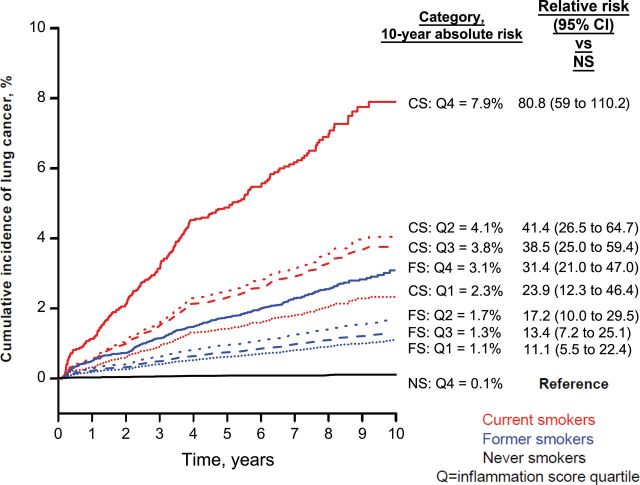Figure 2.
Ten-year standardized cumulative risks of lung cancer separately among never smokers (NS; black lines), former smokers (FS; blue lines), and current smokers (CS; red lines) across an inflammation score which was based on four independent markers (C-reactive protein [CRP], B cell–attracting chemokine 1 [BCA-1/CXCL13], MDC/CCL22 [macrophage-derived chemokine], and interleukin 1 receptor antagonist [IL-1RA]). Cumulative risks were estimated using weighted Cox regression models and were standardized to the age, sex, and smoking (pack-years and time since quit) distributions of the 50862 Prostate, Lung, Colorectal, and Ovarian Cancer Screening Trial screening arm participants eligible for selection into our case–control study. The figure also shows relative risks of lung cancer for each inflammation score quartile (Q) and smoking status compared with never smokers with inflammation score in the fourth quartile. The cumulative risks of lung cancer estimated for never smokers in the first, second, and third quartiles of the inflammation score were 0.17%, 0.26%, and 0.12%, respectively. Overall estimated 10-year cumulative risks of lung cancer were 0.16% in never smokers, 1.8% in former smokers, and 5.0% in current smokers (data not shown in figure).

